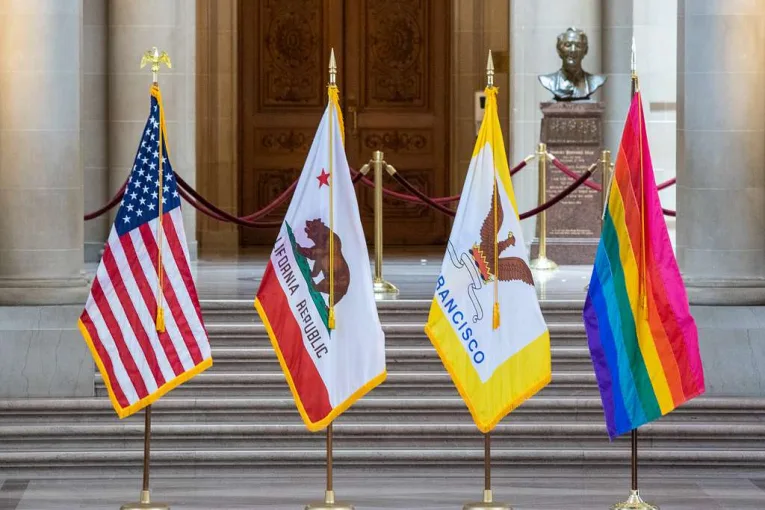
The Trump administration’s recent move to withhold federal transportation funding from sanctuary cities reignites a complex legal and political battle that has significant implications for urban policy and governance in the United States.
This strategy, spearheaded by Sean Duffy, the new Secretary of Transportation, echoes earlier attempts to leverage federal funds as a tool to enforce immigration policies at the local level.
However, the scale and potential impact of this approach could far exceed previous endeavors, raising questions about its legality, efficacy, and broader consequences for American cities and states.
“This is on a much, much larger scale,” Stephen Vladeck, a law professor at Georgetown told the NY Times recently.
At the heart of this issue is the concept of sanctuary cities—municipalities that limit their cooperation with federal immigration enforcement. These policies are often enacted to build trust between immigrant communities and local law enforcement, ensuring that undocumented residents can report crimes and access services without fear of deportation.
Sanctuary policies have become a contentious point in America’s immigration debate, with proponents arguing for local autonomy and critics claiming that these policies undermine federal immigration laws.
The Trump administration’s renewed focus on sanctuary cities involves a proposal to redirect billions of dollars in federal transportation funds away from jurisdictions that do not comply with federal immigration enforcement.
Legal scholars argue that this approach is significantly broader than previous efforts to withhold law enforcement grants, which were ultimately stymied by legal challenges. The funds at stake now encompass a wide array of infrastructure projects—highways, transit systems, airports, and more—which are critical to the functioning of both urban and rural areas across the country.
The legal landscape surrounding this issue is murky. Past court rulings suggest that, while the federal government can attach conditions to grants, these conditions must be reasonable and not so coercive as to effectively force states and cities to adopt federal policies.
The precedent set in the 1987 Supreme Court case regarding the national drinking age suggests that the scale of funding at risk is a crucial factor. Withholding 5% of highway funds was deemed permissible, but threatening 100% of transportation funds could be seen as excessively coercive.
“The two biggest things that distinguish this from that are both really bad for Trump,” said Professor Vladeck.
Moreover, the recent Supreme Court decision curbing the power of federal agencies to set policies beyond congressional mandates complicates the Trump administration’s strategy. The current legal environment is less favorable to executive actions that significantly alter the distribution of federal funds without explicit legislative backing. This context suggests that any attempt to withhold transportation funds from sanctuary cities could face formidable legal challenges.
Beyond the legal considerations, the practical implications of this policy are profound. Major urban areas, which often have sanctuary policies, would bear the brunt of funding cuts. This could lead to deterioration in public transit systems, road maintenance, and other critical infrastructure, disproportionately affecting low-income and minority communities that rely heavily on these services.
Additionally, the ripple effects could extend to rural areas in states with sanctuary policies, as infrastructure projects are delayed or canceled due to funding shortages.
The law at issue—passed by Congress and notably distinct from an agency memo—withheld only 5 percent of federal highway funds.
“Here, if you don’t cooperate with ICE in apparently the subjective view of the president, you lose 100 percent, as I read the memo,” said Greg Shill, a law professor at the University of Iowa who studies transportation in an interview with the NY Times. “That seems much more coercive than losing 5 percent.”
Many observers add that, politically, the move to withhold transportation funds from sanctuary cities may galvanize opposition from a diverse coalition of stakeholders, including state governments, city officials, and advocacy groups. The potential for widespread disruption to infrastructure projects could generate resistance not only from traditional political opponents but also from business leaders and constituents who depend on reliable transportation networks.
In considering these factors, it is clear that the Trump administration’s approach to sanctuary cities and transportation funding is fraught with challenges. The strategy risks being entangled in protracted legal battles, while the potential for widespread infrastructure disruption could engender significant political backlash. Moreover, the policy raises broader questions about federalism and the appropriate balance of power between federal and local governments in the United States.
Ultimately, the administration’s attempt to coerce sanctuary cities through transportation funding underscores the need for a more nuanced approach to immigration policy—one that recognizes the complex interplay between federal objectives and local realities. Rather than resorting to punitive measures, a more constructive path forward would involve engaging with local governments to address the underlying issues that drive immigration and sanctuary policies.
As this debate unfolds, it is crucial for policymakers, legal experts, and the public to carefully consider the implications of using federal funds as a tool of coercion. The decisions made in this context will not only shape the future of sanctuary cities but also set important precedents for the relationship between federal and local governments in America. The stakes are high, and the outcome will have lasting consequences for the nation’s infrastructure, governance, and social fabric.